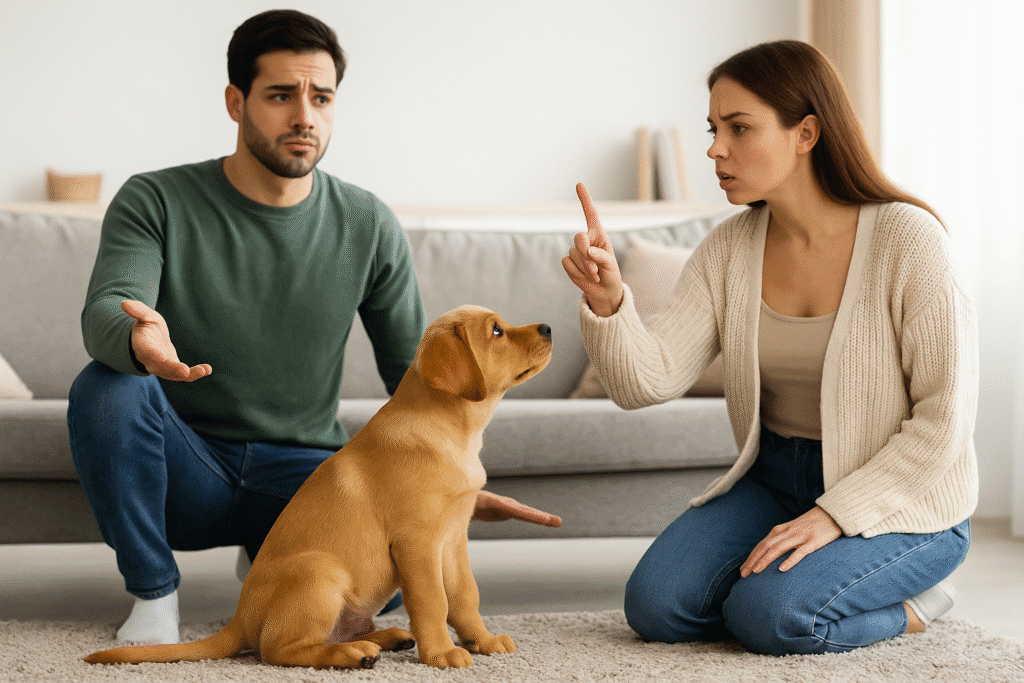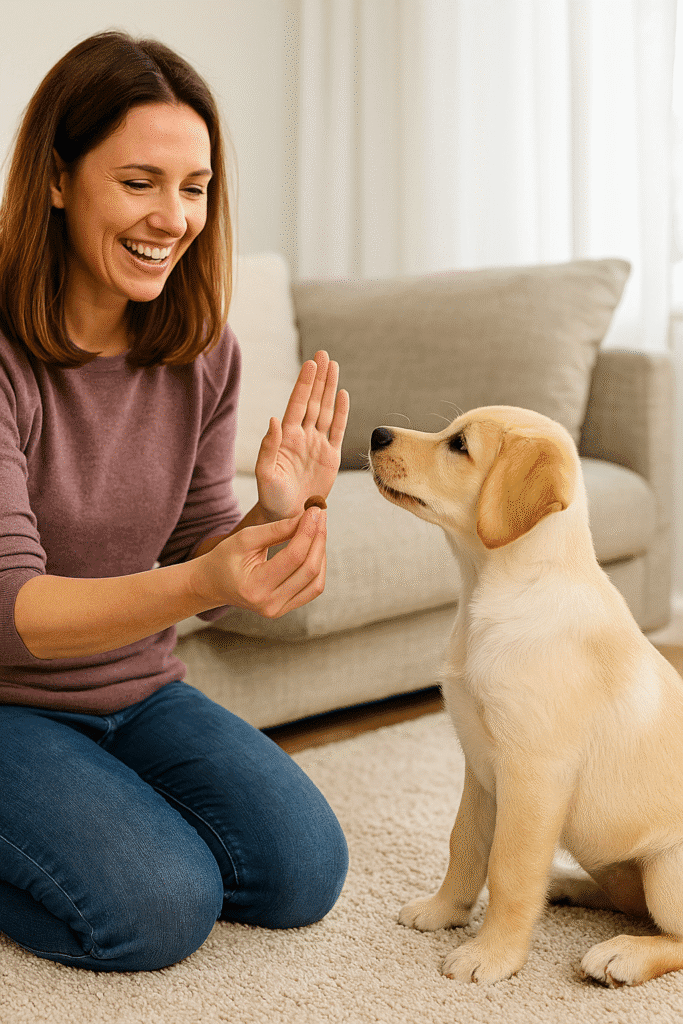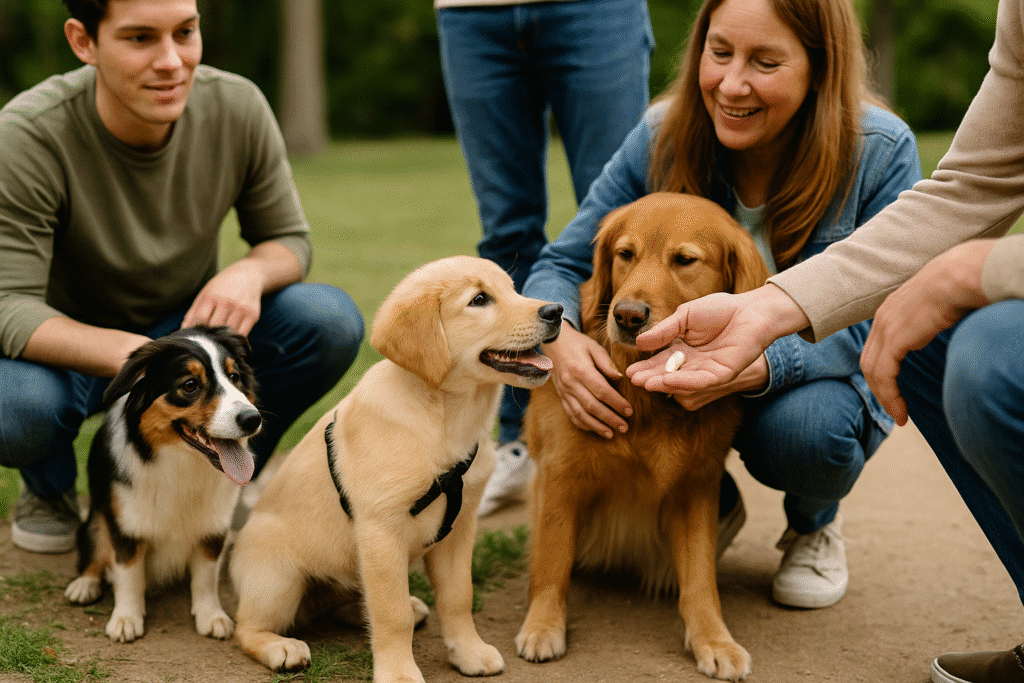Training a puppy can be challenging, and many owners unknowingly make mistakes that slow progress. This guide on puppy training mistakes reveals the seven most common errors and provides solutions to ensure your dog grows into a confident, obedient, and happy companion.
Introduction
Bringing home a new puppy is exciting, but it also comes with responsibility. Training is essential for a harmonious household, yet even the most well-intentioned owners can make mistakes. These puppy training mistakes can delay progress, cause frustration, or even lead to unwanted behaviors later in life. Let’s explore the most common errors and how to avoid them with practical solutions.
(Outbound link: See more dog training basics from PetMD: Dog Behavior & Training Tips.)

1. Inconsistent Commands
Puppies learn best with clear, consistent cues. Using different words for the same command (like “down” vs. “off”) confuses your puppy.
How to Fix: Choose one word per command and ensure all family members use it consistently.
2. Lack of Positive Reinforcement
Some owners rely too heavily on punishment instead of rewards. Positive reinforcement—using treats, praise, and play—is far more effective for building trust and shaping good behavior.
(Internal link: Learn more in our Clicker Training Guide.)
3. Skipping Socialization
Socialization is critical between 8 and 16 weeks of age. Missing this window can lead to fearful or aggressive behavior later.
How to Fix: Expose your puppy to different people, pets, and environments in a controlled, positive manner.
(Internal link: For a full checklist, see Puppy Socialization Guide.)

4. Training Sessions That Are Too Long
Puppies have short attention spans. Training for too long leads to boredom and frustration.
How to Fix: Keep sessions short (5–10 minutes), multiple times per day, with a fun activity at the end.
5. Ignoring Leash Training Early
Some owners delay leash training, which makes walks stressful later on. Puppies should get used to collars and leashes early in life.
How to Fix: Introduce the leash gradually indoors, then move to short outdoor walks.
(Internal link: See our Guide to Leash Walking Without Pulling.)
6. Not Setting Boundaries
Allowing puppies to jump on people or beg at the table may seem cute at first, but it creates long-term behavioral issues.
How to Fix: Establish rules early and enforce them consistently with gentle redirection.
7. Expecting Results Too Quickly
Owners sometimes expect perfect behavior overnight. Training takes time, patience, and repetition.
How to Fix: Celebrate small victories, remain patient, and avoid punishing mistakes.
Bonus Mistake: Lack of Mental Stimulation
Puppies need not just physical activity but also mental challenges. Without enrichment, they may resort to destructive behaviors.
How to Fix: Use puzzle toys, obedience games, and short training drills to keep their minds engaged.
(Internal link: For anxiety-related tips, see Natural Remedies for Dog Anxiety.)

Frequently Asked Questions (FAQ)
- When should I start training my puppy?
Begin as early as 8 weeks with simple commands and positive reinforcement. - What’s the biggest mistake puppy owners make?
Inconsistency in commands and reinforcement is one of the most common errors. - How long does it take to train a puppy?
Basic obedience can take weeks, but full training is an ongoing process. - Can old habits be fixed?
Yes, but it requires patience, consistency, and possibly professional help. - Should I hire a professional trainer?
If you’re struggling, professional trainers can provide guidance and structure.
Conclusion
By avoiding these puppy training mistakes, you’ll set your dog up for a lifetime of good behavior and trust. Training should be fun, rewarding, and consistent. Remember—patience and positivity go a long way toward raising a well-adjusted companion.
Call to Action
Want more step-by-step guides? Explore our Training Tips collection here.

